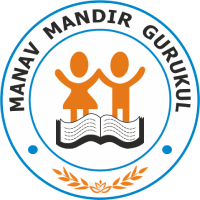The Solar-Powered Water Purifier is a STEM-based community welfare project developed by Ishaan Avi Gupta, a Class X student at The Shriram Millennium School in Noida. The project aims to address the shortage of clean water supply in remote villages, specifically in Delhi and Uttar Pradesh, where access to clean water is limited or non-existent. The purifier utilizes solar power and the chlor-alkali process to purify water effectively.

The project’s key features and mechanisms are as follows:
Purification Process: The purifier utilizes the chlor-alkali process, which involves electrolysis of sodium chloride (NaCl) present in water. The process uses stainless sheets as the cathode and anode to separate sodium and chloride components. The reduction of sodium ions (Na+) at the cathode produces sodium metal (Na), while the oxidation of chloride ions (Cl-) at the anode releases chlorine gas (Cl2). This process effectively removes impurities and contaminants from the water.
Solar Tracking System: Unlike traditional solar panels, the purifier incorporates an innovative Solar Tracking System. This system automatically adjusts the position of the solar panel throughout the day to ensure it directly faces the sun. By maximizing energy absorption, the system enhances the efficiency and overall performance of the purifier, even on cloudy or dusty days.
Increased Efficiency: The purifier is designed for increased efficiency under various conditions. The stainless sheets used in the chlor-alkali process optimize the electrolysis of NaCl, enabling efficient water purification. Additionally, the Solar Tracking System ensures consistent energy generation by aligning the solar panel with the sun’s position, resulting in higher voltage and DC output.
Minimal Maintenance: The purifier requires minimal maintenance, with only daily cleaning of the solar panel necessary. This feature makes it ideal for rural communities with limited resources and technical expertise.


To assess the quality of the purified water, the project includes measuring the Total Dissolved Solids (TDS) and pH levels. A TDS meter or conductivity meter is used to measure the concentration of dissolved solids in the water before and after purification. This provides an indication of the water’s purity and helps determine if it meets desired standards. pH levels are measured using a pH meter or test strips to assess the water’s acidity or alkalinity. Extreme pH levels can be harmful to health, so monitoring pH ensures the water is within an acceptable range for drinking. The project installations include a pilot project in Sahibabad, Uttar Pradesh, and two locations associated with the Manav Mandir Mission Trust NGO in Sarai Kale Khan and Manju-ka-Tilla, Delhi. These installations aim to provide clean and drinkable water to under-served communities and supplement the existing municipal water supply.
Under the mentorship of Manav Subodh at The Purpose Academy, a program established by 1M1B (One Million for One Billion), Ishaan developed the Solar-Powered Water Purifier. This project’s social significance was acknowledged by the Sutardja Centre for Entrepreneurship and Technology (SCET) at the University of California, Berkeley. Ishaan had the opportunity to present his work and receive feedback accolades in San Francisco. The Solar-Powered Water Purifier project represents Ishaan’s initiative to contribute to addressing global challenges, particularly in providing clean and drinkable water to remote communities. By utilizing solar-powered technology and innovative purification processes, this project aims to improve the health and well-being of people in Delhi and Uttar Pradesh’s villages, where clean water access is limited.

